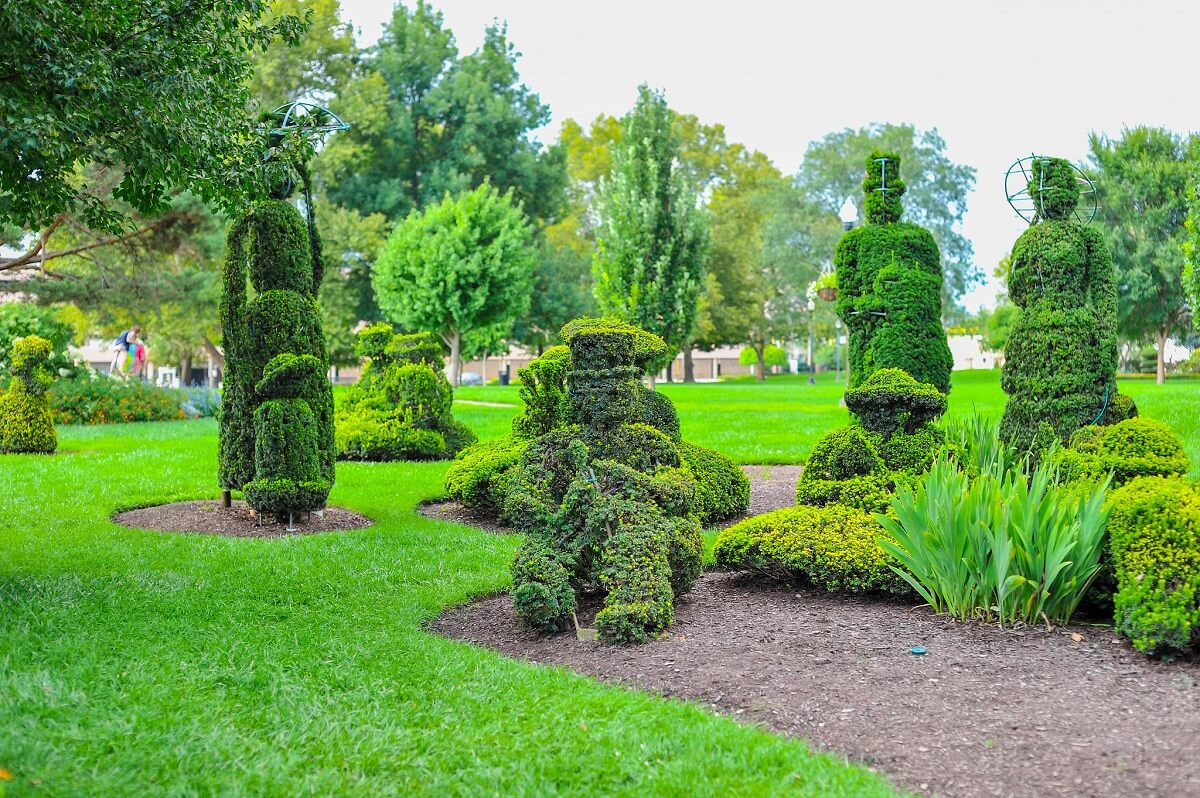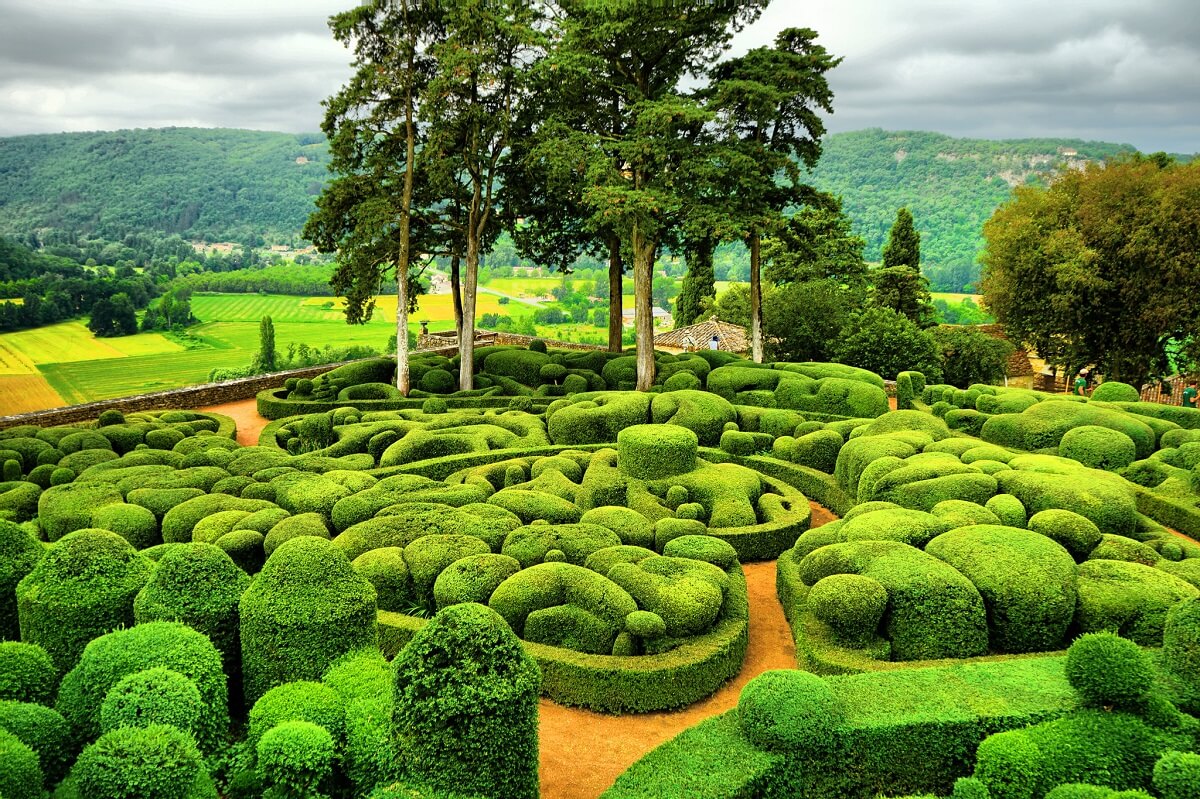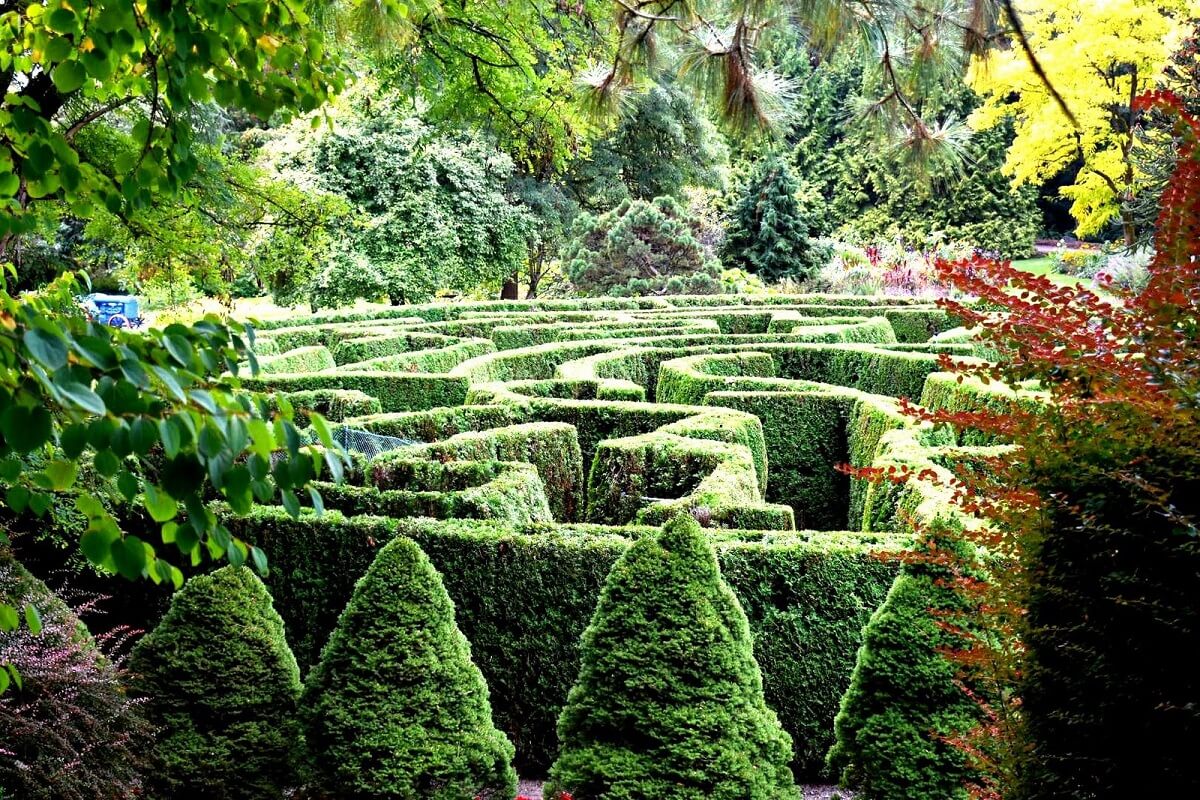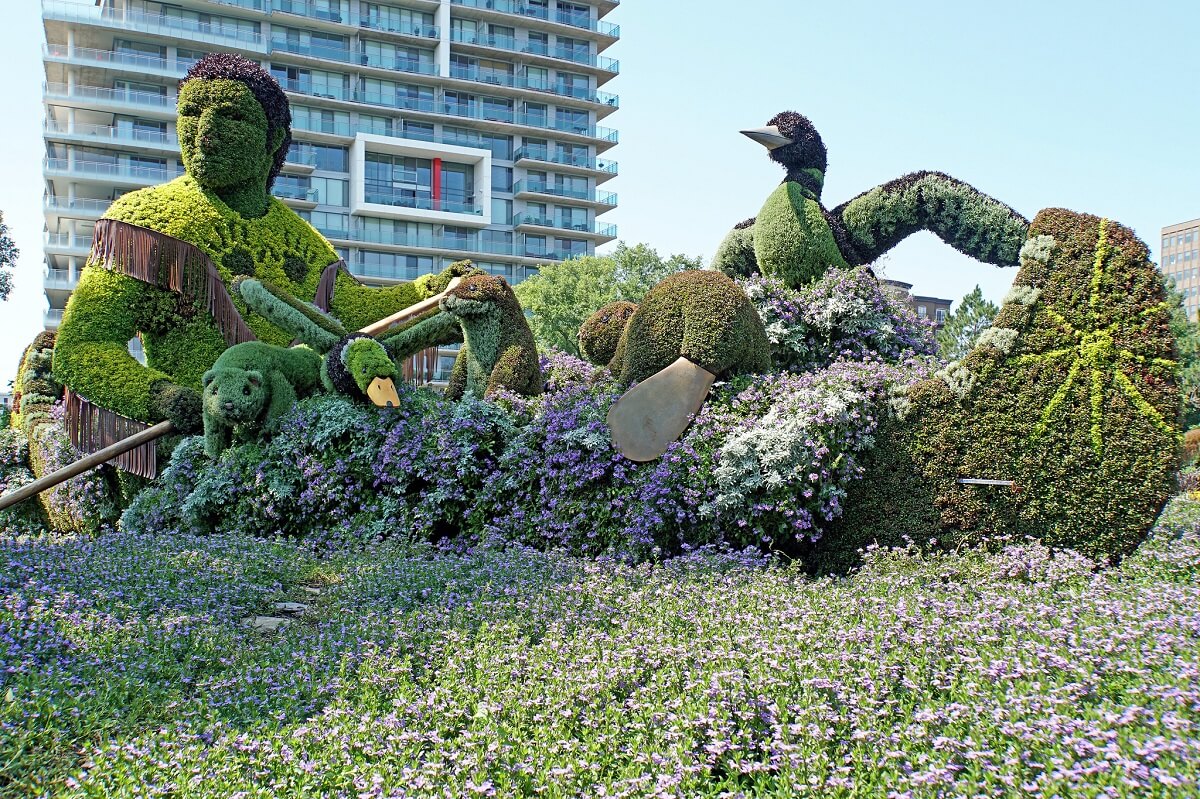Not too long ago, I saw a photograph online of a reclining human figure, larger than life, totally carved out of shrubs. Garden topiary.
I was fascinated — and recalled years ago, when I visited classic gardens in England and France like Chatsworth House in Derbyshire, and the finely manicured acres of Chateau Versailles.
I don’t think I could be as orderly in my garden plans as Versailles or any of the other royal gardens in Europe and Great Britain. I’m more of a make-it-up-as-you-go type of gardener. But I do think it would be cool to have some garden topiary here and there to offset the random lack of order in my garden chaos.

Like maybe a shrub clipped in the shape of a dog. I actually tried that once, and my family laughed at the attempt. They thought my dog looked more like an alien. Oh well. I tried, and I will try again.
Related Post: Moss Art
I realize now, that I have to be patient — not one of my strong points. Garden topiary is a lengthy training process. Specific types of trees and shrubs are trained into artificial or decorative shapes over years. And some trees and shrubs work better than others.

Apparently, the best trees to train are the box, cypress, and yew, and the best shrubs are the rosemary, holly and box honeysuckle. None of these grow well in my growing area, though I do have some holly and honeysuckle that’s far too established to cut back and start training at this late stage.
It’s interesting the art of garden topiary dates way back to the Roman era, specifically the first century. That’s the first known record of topiary, but gardeners have been creative since the beginning of gardening, so it’s quite possible the art form existed long before the first century, and the topiary artists assumed different names.

In the 18th century, this artist was often referred to as a tree barber, a tree mason, or a leafage sculptor. Garden topiary was most prevalent in Great Britain and the Netherlands where stone sculpture was more expensive to install in gardens, though in Great Britain, there are at least as many fine stone sculptures in the grand garden estates as there are topiary sculptures.
Related Post: 10 Types Of Moss For Your Garden
But back to my not-so-realistic garden topiary dog. Perhaps there’s another way to create my garden, plant-based sculpture? Maybe a metal frame, lined with fine mesh to hold the soil and the oh-so-colorful floral inserts? It appears to be a new trend, and I could go all out and be super creative.

The questions arise: Do I order the metal framework? Purchase it at a garden center (if they have them)? Or create my own? The end result would definitely be interesting whichever way I choose — but certainly not up to the standards of the professionals. My inspiration? A mammoth display of garden sculpture commemorating a milestone in my country’s history.
When Canada celebrated its 150th anniversary in 2017, one of the biggest tourist attractions was MosaïCanada 150 in Gatineau, Quebec. The concept presents a magical garden with 100 huge sculptures combining the infrastructure of landscape with design, sculpture, and living plants to portray a truly live art form.
Having visited some of the grandest gardens in Great Britain and Europe, and admired their unique garden topiary shrubs, I was still unprepared for the overall awe factor that greeted me when entering the grounds of MosaïCanada 150. Huge figures of animals, ships, trains — anything and everything that defined Canada’s vibrant history, larger than life and covered in nature’s finest shrubs and flowers. It was breathtaking.
Of course, I wanted to take some of this creativity home with me and add it to my garden. Those of you who follow my posts know I like to dream big where my garden is concerned.
I may never get to the point where I have larger than life-size plant sculptures (given my limited garden space) but a few smaller examples will add a unique sense of pizzazz. So, even if my dog art doesn’t really look like a dog, it will blend admirably into my rustic, make-it-up-as-you-go gardens. Worth a try.









































Leave a Reply